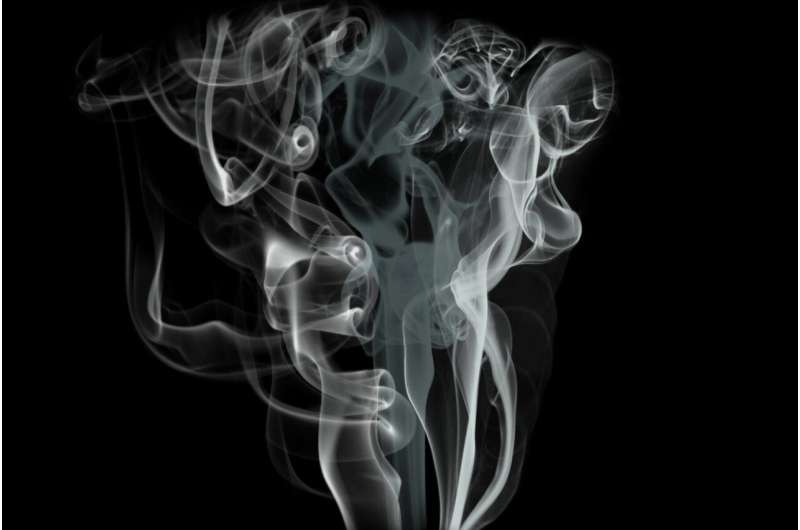Credit: CC0 Public Domain
It's long been established that secondhand smoke is a detriment to health and linked to cancer. Now, researchers are looking more closely at thirdhand smoke, which is the presence of toxic tobacco by-products that remain on surfaces such as furniture, décor, walls, and floors.
In a new study published in the Journal of Exposure Science & Environmental Epidemiology, researchers tested the surfaces in smoking households where children reside and found troubling results, says Ashley Merianos, a tobacco researcher at the University of Cincinnati who led the study.
Researchers found nicotine on surfaces in all of the children's homes and detected the presence of a tobacco-specific carcinogen (called NNK) in nearly half of the homes, she says.
The study reported that the NNK levels on surfaces and vacuumed dust were similar. Merianos says that surfaces and dust can be similar reservoirs and sources of thirdhand smoke exposure for children.
"This is critically important and concerning since NNK is considered the most potent carcinogen for tobacco-induced cancers," says Merianos, an associate professor in UC's School of Human Services.
Additional findings include:
- Children living in lower-income households had higher levels of NNK and nicotine found on home surfaces.
- Children living in homes that did not ban indoor smoking had higher levels of NNK and nicotine found on surfaces.
Merianos says that NNK and nicotine were still detected in homes with voluntary indoor smoking bans, which highlights the persistence of thirdhand smoke pollutants on surfaces in children's homes.
"This research highlights that home smoking bans do not fully protect children and their families from the dangers of tobacco," she adds.
More information: Ashley L. Merianos et al, Contamination of surfaces in children's homes with nicotine and the potent carcinogenic tobacco-specific nitrosamine NNK, Journal of Exposure Science & Environmental Epidemiology (2023). DOI: 10.1038/s41370-023-00629-8
Provided by University of Cincinnati
























